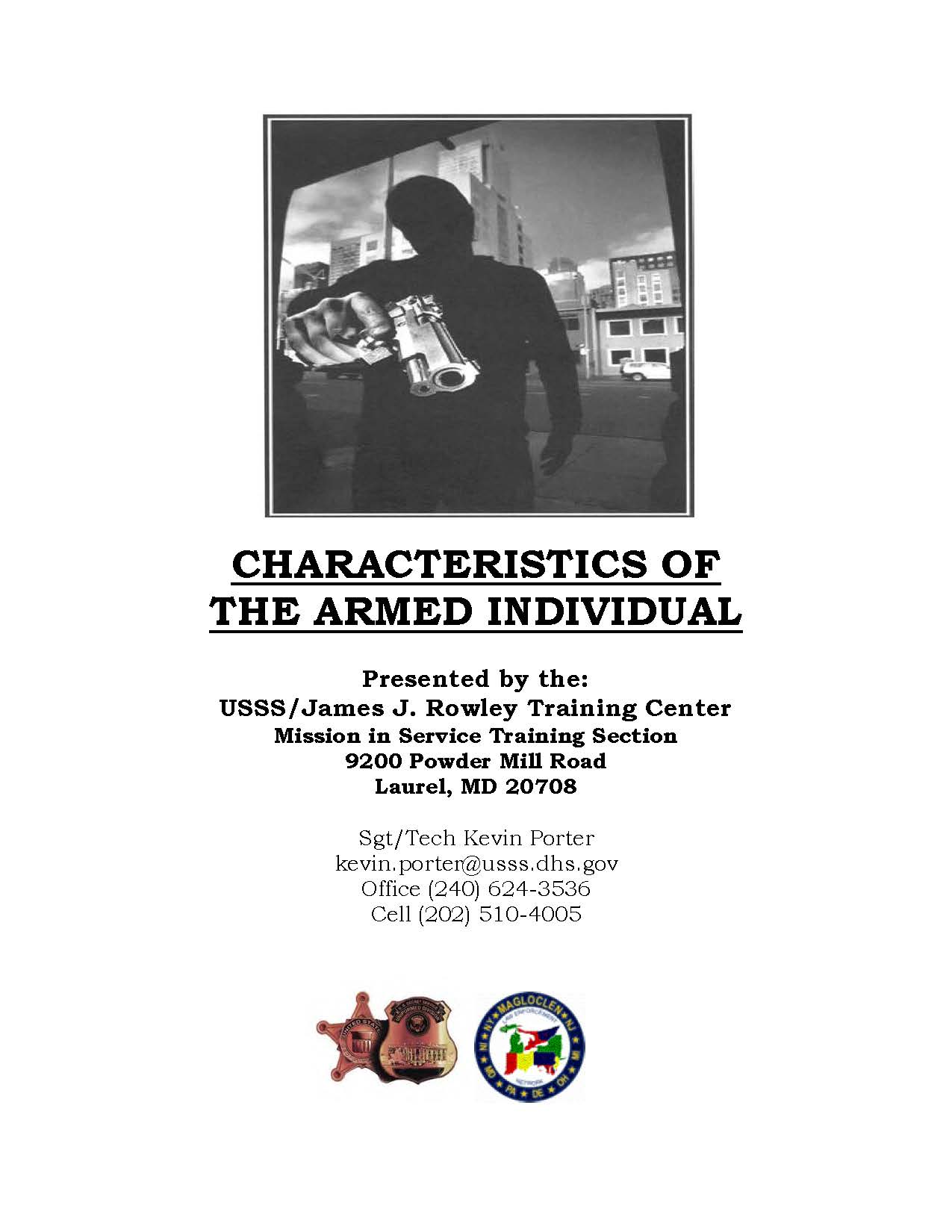When placing a subject under observation for the purpose of trying to determine whether or not that person is possibly armed, what is the first crucial trait that you as a Law Enforcement Officer should try to determine about that individual?
DETERMINE THEIR STRONG SIDE – Look for possible indicators such as Rings, Wristwatches, Writing,
Smoking, Lighting Cigarettes, Holding/Moving Objects, etc. to help determine a favored side.
An individual who carries a gun on their person will periodically touch that gun both consciously and unconsciously.
This is called a Security Feel.
LOOK FOR:
• Touching
• Feeling
• Adjustments
• Stiffer Arm
88% of the people in the U.S. are right handed. The majority of those right-handed people that carry handguns illegally carry them in the right front waist band, loose.
WHY
• They see it in the movies.
• It’s the “cool” thing to do.
• That is where it is the most secure and accessible
Body Movements
– conscious & unconscious (reasons/adjustments for touching, security feels, physical property of gun, when, why, how).
• Cause for slippage of weapon and when
• Stiffer arm on gun side
• Holding
• Bending
• Macho feeling
• Running (from crime, rain, traffic, bus, subways, cab, etc.)
• Leaning
• Sitting
• Reaching
• Crouching
• Turning from view for adjustment
• Pulling pants up, down
• Pulling clothing down
• Shorter arm & leg swing on gun side
• Protective turning of armed side
• Arm over center of body, etc.
• Turn and hold in crowds
• Looking down at gun
• Arm or part of arm holding snug
• Security hold with elbow on gun
• Getting in/out of vehicles
While walking or running (especially in the rain), you will notice a short or stiff arm swing and short leg stride. What are their actions when walking by person/persons, and streets/doorways, etc?
Vehicle Stops
• Look for a rising shoulder, or moving up to grab the weapon from the waistband.
• Bending over or shoulder dip to hide the weapon under a seat.
Clothing & Actions
– what features stand out, attract your attention, and arouse your suspicion.
• Clothing: Does the clothing fit the season?
• Does the clothing match?
• Is the clothing loose, or baggy?
• In cold weather, is the individuals coat unzipped or unbuttoned?
• Look for the individual wearing only one glove.
• When concealed in a jacket pocket, hood, or bag, gravity pulls that weight down – Firearms have WEIGHT
• Look for uneven dip in clothing or bags.
• Tailored in/worn out, etc.- build of subject
• Does shoes/boots match clothing (conditions)
• Does work outfits match conditions
• Pants, belts (no belt loops, but is wearing belt)
• Ponchos (wide arms, etc)
• Chains, straps, hats, etc.
• Socks (use elastic as ankle holster)
• Pockets
• Hoods and drawstrings
• Color combinations
• Gloves (one hand gloved, the other in their pocket)
• Outer garments (Are jacket, pants, shoes coordinated for dress/work/leisure?)**BULGES and certain body movements observed to discover the smallest/best concealed unholstered weapons.
Different ways guns are carried, and where they are possessed
• Waistband** (Front side, crook of back, etc.)
• Pants (Pockets, cuffs, etc.)
• Pockets (Pants, jackets, coats, etc.)
• Hats (Including hoods of sweatshirts, jackets, etc.)
• Underwear (Protective cups, etc.)
• Shoes and boots
• Bags (Hand, backpacks, pouches, shoulder)
• Radios, cameras, video recorders (all sizes)
• Grocery bags, boxes, shopping bags, etc.
• Hollow books, newspapers, cigarette packs & boxes
• Holsters (Bought, made, stolen-All types)
• Bikes & Motorcycles
• Vehicles
Confrontation tactics and apprehension
• Picking location – time, circumstances permit; where, why
• Single, multiple person stops
• Approach techniques
• Cover
• Prior knowledge of person you are approaching
• Firearm usage/ restraint/shooting tactics
• Pursuit of armed felons (auto/foot)
• Searches
• Surveillance of person/persons
• Vehicle stops and searches
• Conversation techniques with the person/persons during approach, search, questioning, and possibly processing
• Resistance by person/persons
• THINK about when you wear your gun off duty, and your actions (they are very similar).

